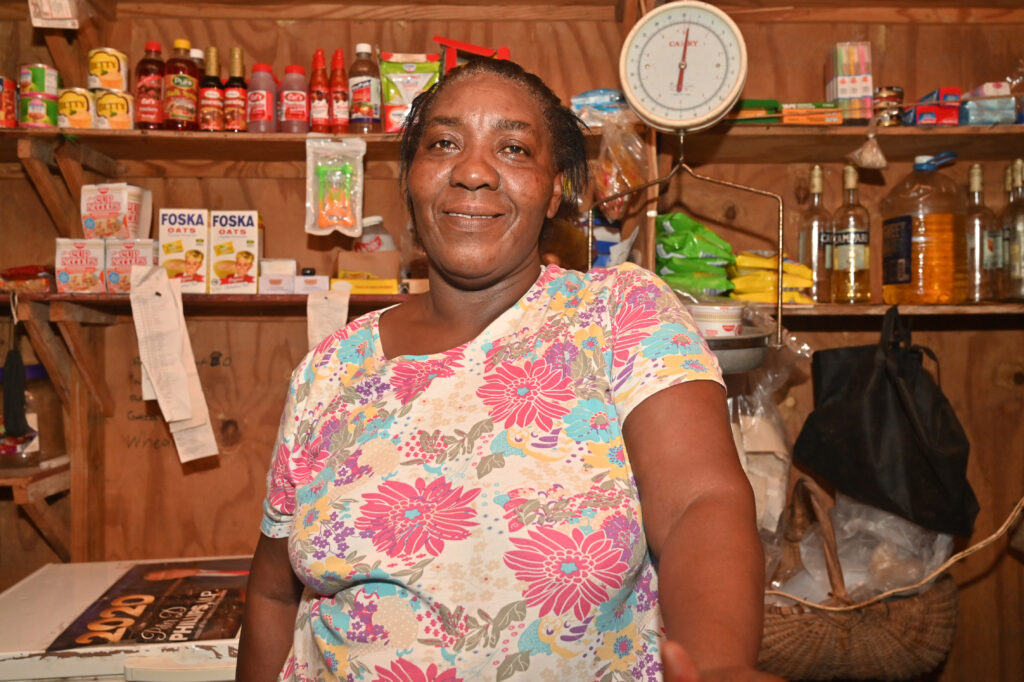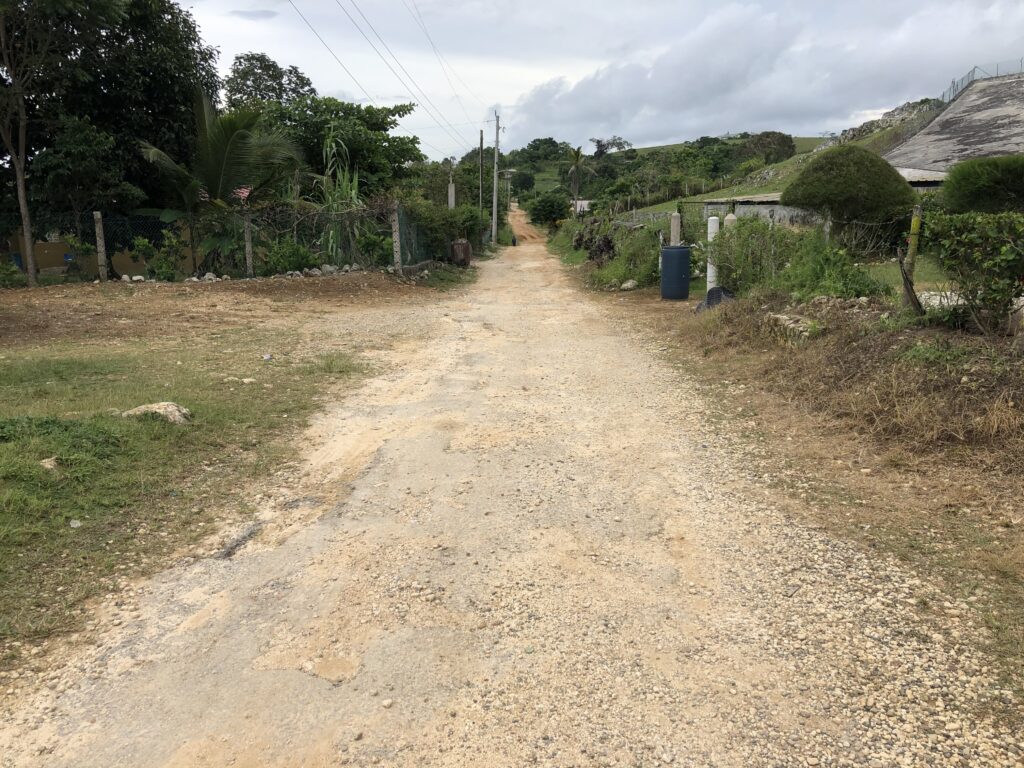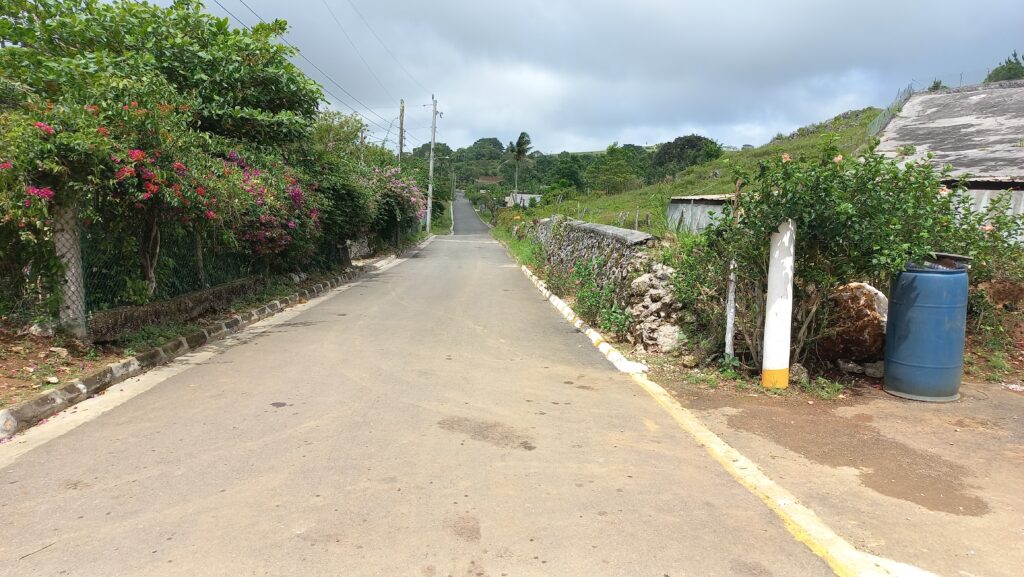Up to three years ago, people were moving out of Epworth – a small farming village 8.6km from Ocho Rios in St Ann – due to the deplorable condition of its only access road and the attendant lack of economic opportunities.
Fast forward to 2022, and the almost 200 residents are boasting of the newly rehabilitated 3.1 km road from Davis Town into the community and the influx of opportunities now being experienced.
“A dis yuh call development,” says Edris Taylor, a shopkeeper in Epworth, who everyone calls Precious. “We appreciate the road a lot! It mean so much! One time, if yuh ask a vehicle fi carry yuh dem a charge like $3,500, $4,000 just from St Ann’s Bay fi come up here, and dat a just from Davis Town!”
“Now when I have di shop goods, based on the amount of goods, dem will charge like $1,200 and if they carry a carload, is $300 per person from St Ann’s Bay. Any one person is like a $1,000. That’s a big difference,” she explains.
It is a difference that was sparked thanks to the Caribbean Development Bank’s Basic Needs Trust Fund (BNTF) which provided some J$108,491,251.70 million (USD723,275.07) to the Jamaica Social Investment Fund (JSIF) to fund the road rehabilitation. This came after the community, through the Epworth Police Youth Club and Epworth Community Development Council (CDC), applied to JSIF for financing to repair the road.

According to JSIF, the project – Epworth Rural Feeder Road Rehabilitation – involved scarifying, grading, and shaping 6250 m³ of road surface, constructing 3,100m of marl base, constructing 3,100m of asphalt pavement, and the construction of eight cross drains. Residents say that the new drains have significantly reduced the incidences of flooding in the community – making them more resilient to this climate change impact. The community contributed over $4 million in labour and related costs. The project was approved in March 2020, and the work was completed by December 2020.
The new road, coupled with the community’s proximity to popular nearby tourism sites, has markedly improved the property value and appeal of the community.
“Every week people come a look land fi buy,” shopkeeper Precious reveals.
Hospitality worker and goat farmer Ryan Williamson attests.
“A lot more persons are coming in since the road has been fixed,” he says. “They want land to buy but they’re not getting it. A lot more are coming in to get produce to buy as well, like Irish potatoes, so I’m going to extend my farm and go into Irish potatoes in the next couple of months.”

JSIF says there was “a significant reduction” in crop production in Epworth over the last 15 years because of the deplorable road conditions. It estimates that the improvement of the road surface is likely to increase crop production by 25% as farmers can transport their crops and input materials more efficiently.
Farmer Williamson agrees. He says when the road was in disrepair, he spent about $36,000- $40,000 monthly on petrol and repairs for his car’s front-end parts every three or four months.
“Now it costs me $28,000 per month for gas, and (back then) gas was cheaper!” he says.
According to JSIF, the drainage channels on the road had collapsed, the wearing course had eroded, and the sub-base was virtually non-existent.
Elderly, middle-aged, and young residents report horror stories of walking the treacherous road in the past. Some spoke of sustaining falls and injuries on the rocky surface; leaving home at 4:00 am to arrive at work or school at 8:00 am, and having to always carry an extra pair of shoes dedicated to the rocky terrain.
These days, however, those who had fled are moving back, the primary school’s enrolment numbers are climbing, and taxis frequent the trip up the hill. On top of that, a multi-million-dollar hydroponics farm is being constructed there – a decision the developers say was partly based on the much-improved road conditions.
“Before the road was fixed, I was threatening to resign,” shares senior teacher Carol Wilson who has been at Epworth Primary School for 25 years. “This road was killing me, so I was threatening to leave.”
“And the school population was going down. At one stage we were in the 60s but now we’re up to about 100, so there has been improvement since the road has been repaired…and I am still here,” she says.
For centenarians Daniel Irons and Laxley Smith, who are neighbours, the memories of the dilapidated road are vivid. They are happy to see the opportunities brought to the community through the refurbished roads.
“The road has improved the chances for employment in the community because in the mornings there are a lot of cars coming to pick up people going to work in Ocho Rios and other places,” says Irons, 102.
For 100-year-old Smith, who attends Davis Town Pentecostal, it now takes him only 15 minutes to get to church, compared with an hour on foot on the rough road in days gone by.
His 26-year-old granddaughter, Sanecia Daley, is a medical doctor at St Ann’s Bay Hospital.
“I’m happy we got the road. It’s something that I always wished would happen. I considered coming back to live but decided against it when I thought of the damage that would be done to my car. But now I’m here every other week or so and it doesn’t bother me,” Dr. Daley says.
At a meeting of the CDC, residents collectively reiterated their gratitude for the repairs and expressed their ownership of and commitment to maintaining the road, because “we don’t want to go back there”.
They’re serious too, reporting a company to the St Ann Municipal Council when they noticed the heavy equipment using the road.
“The tractors and heavy-duty equipment caused damage to a “teeny, little” part of the road and the residents went to the parish council to ensure that the owner fix it because they understand what it felt like to be without a good proper road,” one woman says.
“One of the things that contributed to the strong sense of community ownership, I think, has been the community-driven nature of the Project Appraisal process, where extensive consultations were done with community representatives and other stakeholders. So, the voices of the community persons were sought, heard, and incorporated into the project design. So, at the end of the day, it was truly their project,’ explains Richardo Aiken, Community Development Specialist at the CDB’s BNTF.
The Epworth Community has an agreement with the Municipal Corporation, where they have delegated a few community members to operate as lent men dedicated to continuous maintenance of the drains and sidewalks. These men get a stipend from the Municipal Corporation.

Under the project, community members were also trained to execute basic road maintenance which is preventative such as cleaning drains and de-bushing roadways. They also received maintenance kits to help them do so.
“I can’t say exactly what makes Epworth so different from other communities but there is something special about their buy-in,” says Karl Pivott, Operations Officer with CDB’s BNTF and the representative responsible for Jamaica.
“I was particularly struck by their commitment to maintaining the road. It is very rare that a community organises itself and commits to road maintenance. So, it is one thing for BNTF to fund the road and put in infrastructure, but it is the community’s buy-in that will ensure sustainability,” he said.









